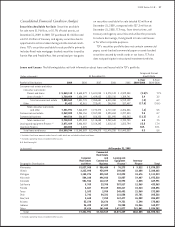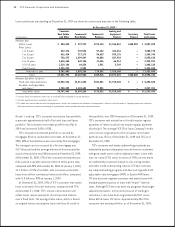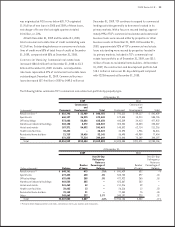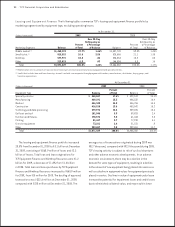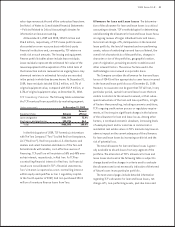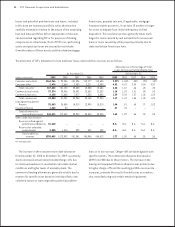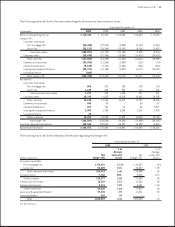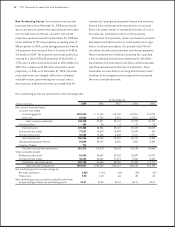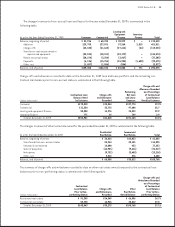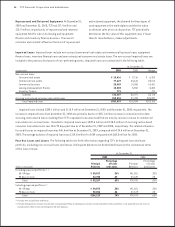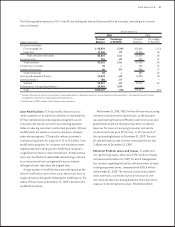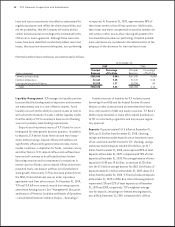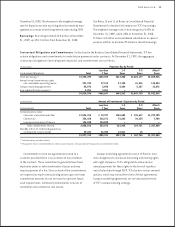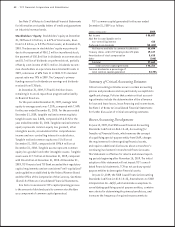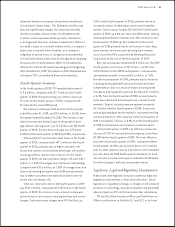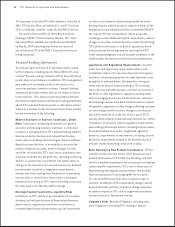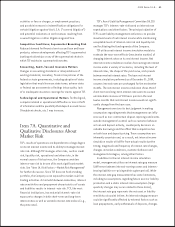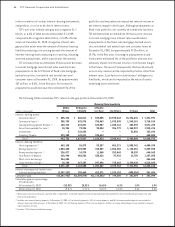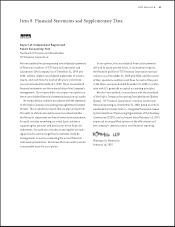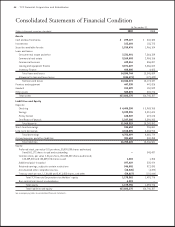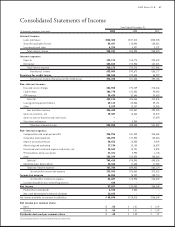TCF Bank 2009 Annual Report Download - page 53
Download and view the complete annual report
Please find page 53 of the 2009 TCF Bank annual report below. You can navigate through the pages in the report by either clicking on the pages listed below, or by using the keyword search tool below to find specific information within the annual report.
2009 Form 10-K : 37
TCF may modify certain loans to
retain customers or to maximize collection of loan balances.
TCF has maintained several programs designed to assist
consumer real estate customers by extending payment
dates or reducing customer’s contractual payments. All loan
modications are made on a case by case basis. However,
under these programs, TCF typically reduces customer’s
contractual payments for a period of 12 to 18 months. Loan
modication programs for consumer real estate borrowers
implemented in the third quarter of 2009 have resulted in
a signicant increase in restructured loans. Primarily these
loans are classied as troubled debt restructurings, referred
to as restructured loans and generally accrue interest
although at lower rates than the original loan.
A large number of modied loans were delinquent at the
time of modication and in most cases these loans were no
longer carried as delinquent following the modication. The
status of these loans at December 31, 2009 is based on the
modied loan terms.
At December 31, 2009, $252.5 million of loans were accruing
and were considered restructured loans, as the borrower
was experiencing nancial difculties and concessions were
granted that would not otherwise have been considered.
Reserves for losses on accruing consumer real estate
restructured loans were $27 million, or 10.7 percent of
the outstanding balance at December 31, 2009. The over
60-day delinquency rate on these restructured loans was
2.48 percent at December 31, 2009.
In addition to
non-performing assets, there were $370.3 million of loans
and leases at December 31, 2009, for which management
has concerns regarding the ability of the borrowers to meet
existing repayment terms, compared with $185.5 million
at December 31, 2008. The increase in potential problem
loans and leases is primarily due to an increase in com-
mercial loans that were downgraded due to the borrower’s
exposure to declining home values. Potential problem
The following table summarizes TCF’s over 60-day delinquent loan and lease portfolio by loan type, excluding non-accrual
loans and leases.
At December 31,
2008
Principal Percentage
(Dollars in thousands) Balances of Portfolio
Consumer real estate
First mortgage lien $53,482 1.11%
Junior lien 13,940 .58
Total consumer real estate 67,422 .93
Consumer other 313 .51
Total consumer 67,735 .93
Commercial real estate 225 .01
Commercial business 605 .12
Total commercial 830 .02
Leasing and equipment nance 10,905 .44
Inventory nance – –
Subtotal (1) 79,470 .60
Delinquencies in acquired portfolios (2) – –
Total $79,470 .60%
(1) Excludes delinquencies and non-accrual loans in acquired portfolios as delinquency and non-accrual migration in these portfolios is not expected to result in losses
exceeding the credit reserves netted against the loan balances.
(2) At December 31, 2009, includes $841.6 million of loans and leases.


